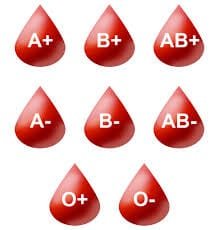Human Blood Groups: A Comprehensive Overview
Human blood groups are classifications of blood based on the presence or absence of certain antigens and antibodies. These blood group systems play a crucial role in blood transfusions, organ transplants, and genetic inheritance. In this article, we delve into the intricacies of human blood groups, exploring their classification, inheritance patterns, and clinical significance.
1. ABO Blood Group System: The ABO blood group system is the most well-known and widely used blood classification system. It categorizes blood into four main groups: A, B, AB, and O, based on the presence or absence of antigens known as A and B antigens on the surface of red blood cells.
- Blood Group A: Individuals with blood group A have A antigens on their red blood cells and anti-B antibodies in their plasma.
- Blood Group B: Individuals with blood group B have B antigens on their red blood cells and anti-A antibodies in their plasma.
- Blood Group AB: Individuals with blood group AB have both A and B antigens on their red blood cells and no anti-A or anti-B antibodies in their plasma. Blood group AB is considered the universal recipient because it can receive blood from any ABO blood group without causing a transfusion reaction.
- Blood Group O: Individuals with blood group O have neither A nor B antigens on their red blood cells but have both anti-A and anti-B antibodies in their plasma. Blood group O is considered the universal donor because individuals with blood group O can donate blood to individuals with any ABO blood group.
2. Rh Blood Group System: In addition to the ABO blood group system, another important blood group system is the Rh (Rhesus) blood group system. The Rh system classifies blood based on the presence or absence of the Rh antigen, also known as the Rh factor, on the surface of red blood cells.
- Rh-positive (Rh+): Individuals who have the Rh antigen present on their red blood cells are considered Rh-positive.
- Rh-negative (Rh-): Individuals who lack the Rh antigen on their red blood cells are considered Rh-negative.
The Rh factor is particularly important during pregnancy, as Rh incompatibility between a Rh-negative mother and a Rh-positive fetus can lead to hemolytic disease of the newborn (HDN), a potentially life-threatening condition.
3. Other Blood Group Systems: In addition to the ABO and Rh blood group systems, there are numerous other blood group systems, each defined by specific antigens and antibodies. Some of these include the Kell, Kidd, Duffy, and Lewis blood group systems, among others. While these blood group systems may not be as clinically significant as the ABO and Rh systems, they can still play a role in certain medical contexts, such as blood transfusions and paternity testing.
Conclusion: Human blood groups are a complex and diverse aspect of human biology, with implications for various medical procedures and genetic inheritance. Understanding blood group systems is crucial for healthcare professionals involved in blood transfusions, organ transplants, and prenatal care. By recognizing the significance of blood groups and their inheritance patterns, we can better navigate the complexities of human physiology and improve patient outcomes in clinical settings.
Thanks for visiting Gymbag4u.com
You may also love reading our following articles. Effective Strategies for Controlling Your Blood Pressure – GymBag4U and gymbag4u.com/how-to-control-the-high-bp-and-low-blood-pressure/ and blood clot prevention natural ways (gymbag4u.com)
